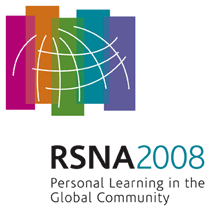
Abstract Archives of the RSNA, 2008
LL-IN2091-R03
Analyzing the Differential Impact of Radiology Information Systems (RIS) Technology across Radiology Modalities
Scientific Posters
Presented on December 4, 2008
Presented as part of LL-IN-R: Informatics
Atanu Lahiri MS, Presenter: Nothing to Disclose
Abraham Seidmann PhD, Abstract Co-Author: Speaker, Bayer AG
Research funded, Bayer AG
Imaging centers have spent millions on RIS. Yet, there is scant research carefully analyzing the clinical and business benefits of these investments. We study the impact of installing a new commercial RIS at the Borg Imaging Group, a large multi-modality and privately-owned network billing over 125,000 procedures yearly.
Key modalities studied include DM (Digital Mammography) and MRI. We use nonlinear statistical models to compare pre- and post-implementation performance. The 7 sites research focuses on report turnaround times, and its components such as the radiologist interpretation and the review turnaround times, the technologist and the transcriptionist turnaround times.
Surprisingly, the RIS installation had no statistically significant impact on the report turnaround times for MRI. On the other hand, the average turnaround time for DM have declined from 4.06 hrs to 2.18 hrs (significant at 1% level), and the standard deviation declined from 2.34 hrs to 1.23 hrs. The reduction was due to a 51.9% reduction in the interpretation turnaround time per DM exam. Using queuing models, we estimate that this translates to about 10% increase in the radiologist revenue generation rate.
An examination into the difference between the impacts on DM and MRI showed that the difference was in the way RIS impacted the underlying information flows. RIS improved gathering of background clinical information by guiding collection of information at the time of scheduling of the exam. Further, RIS-PACS integration made prior exams readily available to the interpreting radiologist. Such improvements reduced the percentage of exams whose interpretation would get delayed due to lack of availability of required background information – in our study, the percentage for DM dropped from 7.92% to 2.56% (significant at 5% level), resulting in significant improvements in the interpretation turnaround, and that for MRI dropped slightly from 3.74% to 2.48% (not significant statistically), resulting in negligible impact on the interpretation turnaround.
Our research explains why certain modalities will experience significant benefits, while others will see infra-marginal improvement at best, and what that means for practitioners.
Lahiri, A,
Seidmann, A,
Analyzing the Differential Impact of Radiology Information Systems (RIS) Technology across Radiology Modalities. Radiological Society of North America 2008 Scientific Assembly and Annual Meeting, February 18 - February 20, 2008 ,Chicago IL.
http://archive.rsna.org/2008/6009944.html

